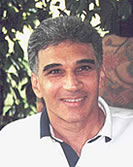One of my readers wrote to me with a question about his daughter, a top junior who hits the ball solidly. He wondered why his daughter will play extremely well one week against excellent players, but will then go on to play horribly the following week. What is the solution to this inconsistency?
For all players learning tennis, fluctuations are inherent to the game. Wide swings from 'good' to 'bad' are part of the learning process. The more advanced a player becomes, the less wide the swings. All players experience fluctuations, but the gap between the highs and the lows slowly begins to tighten up as they advance to higher levels.
The problem with juniors is they look so darn good externally that one forgets they are still just juniors. They play with energy and flair, they bounce on their toes, some of their strokes look almost professional! But this external excellence hides the fact that they have yet to develop flexible and adaptable internal excellence. By "internal" I do not mean all mental. Although mental toughness may be part of the problem, what juniors typically lack is the internal, unconscious flexibility that operates their physical game from week to week.
Remember, tennis is played from the unconscious mind, a part of the body's internal sensory system that learns from experience. The more a player trains, the more competently he or she can perform in an automatic, instinctive mindset. This leads to flexibility and adaptability in his or her game that counters every changing and unexpected condition.
The undeveloped unconscious of a junior means they cannot easily adjust to the myriad of variables thrown at them from week to week. Circumstances change: courts, opponents, environment elements, indoor conditions, outdoor conditions, ball spins, how the player feels physically and mentally, styles of play, timing, seeing the ball, etc. All of these variables (and more) can wreak havoc on a player who does not possess mature and flexible unconscious control. The resulting fluctuations cause parents and players to wonder, "Is there something wrong? Is the issue mental, physical, or what?"
This should be a reminder that tennis is not an external, mechanical game where the prettiest strokes win. This is true for all players, including the best in the world! Tennis is based on acquiring an extensive, internal database of unconscious skills that are constantly utilized during match play. The internal database enables the player to perform in an automatic and spontaneous response mode, quickly producing whichever intricate and diverse mechanics are necessary for the situation.
So what is the solution? What should parents and players do? Run from coach to coach looking for the answer? No, though that appears to be what most players do. The answer is to get back into the grind. Always get back into the grind of hitting balls. For all the frustration and difficulties inherent in learning tennis, that is always the solution. Get back into the grind. There is no quick fix, no magical technique, no immediate secret of success. The fluctuations will begin to taper off if you will just grind it out!
Think of it this way. Suppose a child learning to ride a bicycle came to you saying, "Sometimes I ride good, but other times I'm falling all over the place. What should I do?" What would be your solution? Simple, you would tell the child to go back and continue to practice. In other words, go back to the grind! It works for walking, it works for riding and it works for the fluctuations in a player's tennis game.


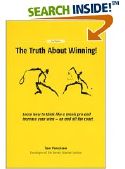
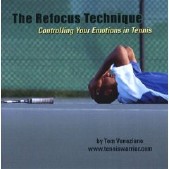
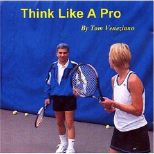
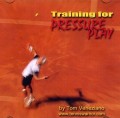



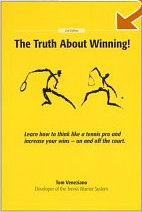
 You will join 13,000 other subscribers in receiving news of updates to the Tennis Server along with monthly tennis tips from tennis pro Tom Veneziano.
You will join 13,000 other subscribers in receiving news of updates to the Tennis Server along with monthly tennis tips from tennis pro Tom Veneziano. 